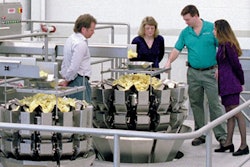
Pat Reynolds
The good news, on the other hand, is that Baldor's operating margins are improved, debt is down, cash flow is good, year-over-year growth in generator sales is up, and cost-reduction goals are being met. All I can say is bring on 2010, and good riddance to 2009.
One thing that surfaced in our little chat that I wasn't aware of was the Energy Independence and Security Act, or EISA. Okay all you machine builders out there, how many of you are on top of this bill? Passed in December 2007 and going into effect December 19, 2010, EISA mandates the minimum efficiency levels of motors sold in the U.S. And it includes any completed equipment brought into the U.S. for sale that contains any motor that fits 1 HP to 500 HP requirements, as specified in EISA.
In a recent story that ran in Today’s Medical Developments magazine, Baldor's John Malinowski, senior product manager—AC motors, described the impact of the new law this way:
"The Original Equipment Manufacturers that build equipment will need to see if the particular motors used in their equipment will fall under the new law. If so, they [may] need to upgrade their motors and they may need to resubmit their equipment to UL or CSA for approvals."
A complete guide to EISA is available at http://www.baldor.com/support/literature_load.asp?LitNumber=MS501.
One other little tidbit from the folks at Baldor. They calculate that electricity accounts for nearly 98% of the lifetime cost of an electric motor. So paying more upfront for a motor that is more energy-efficient than a less expensive motor could save big bucks in the long run.
One thing that surfaced in our little chat that I wasn't aware of was the Energy Independence and Security Act, or EISA. Okay all you machine builders out there, how many of you are on top of this bill? Passed in December 2007 and going into effect December 19, 2010, EISA mandates the minimum efficiency levels of motors sold in the U.S. And it includes any completed equipment brought into the U.S. for sale that contains any motor that fits 1 HP to 500 HP requirements, as specified in EISA.
In a recent story that ran in Today’s Medical Developments magazine, Baldor's John Malinowski, senior product manager—AC motors, described the impact of the new law this way:
"The Original Equipment Manufacturers that build equipment will need to see if the particular motors used in their equipment will fall under the new law. If so, they [may] need to upgrade their motors and they may need to resubmit their equipment to UL or CSA for approvals."
A complete guide to EISA is available at http://www.baldor.com/support/literature_load.asp?LitNumber=MS501.
One other little tidbit from the folks at Baldor. They calculate that electricity accounts for nearly 98% of the lifetime cost of an electric motor. So paying more upfront for a motor that is more energy-efficient than a less expensive motor could save big bucks in the long run.

























